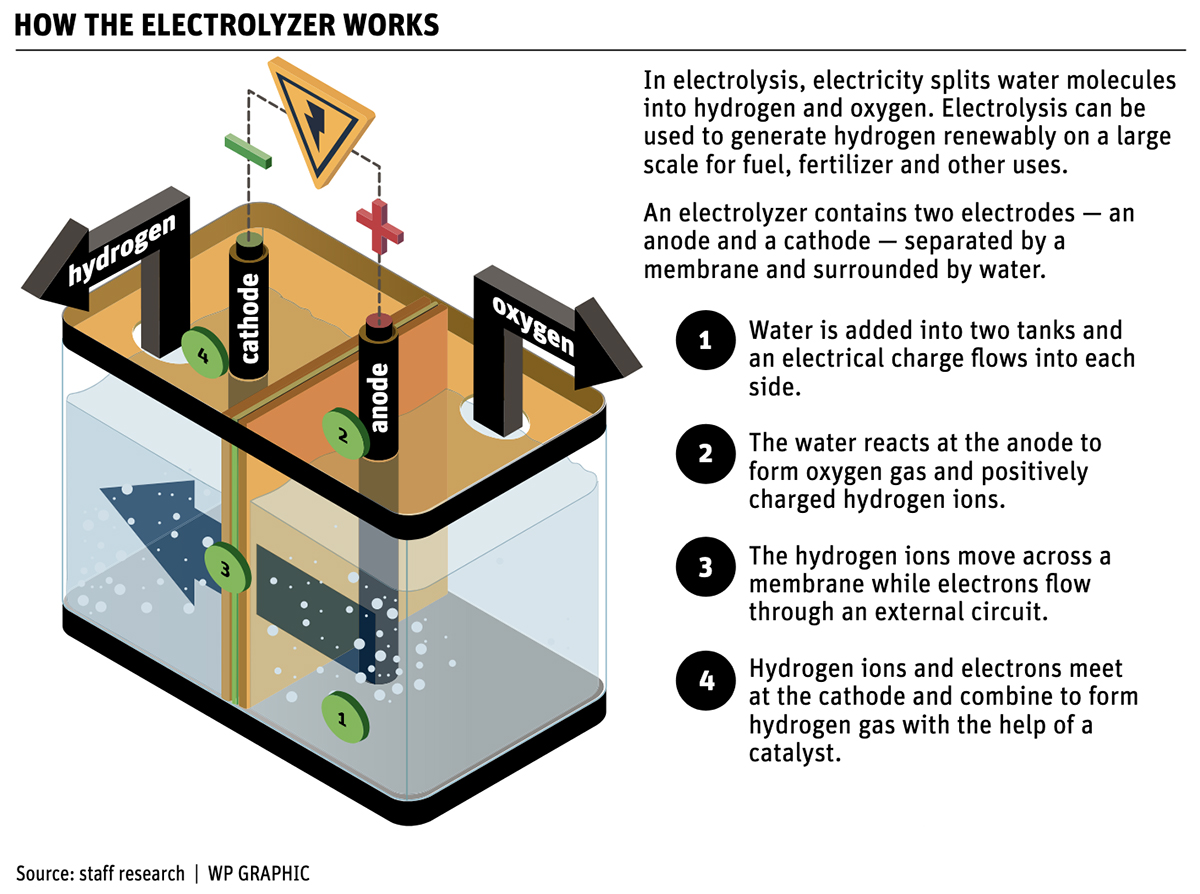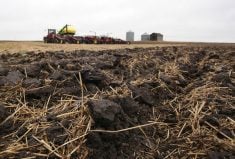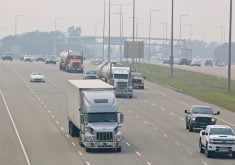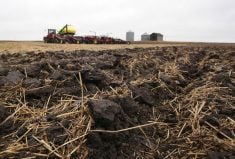SPERLING, Man. — The data is clear: diesel is hard to beat.
Using any metric — cost per litre, energy by weight or energy by volume — diesel is a superior fuel to alternatives like hydrogen or ammonia.
“Diesel is an absolutely amazing energy carrier,” said David Layzell, a University of Calgary professor and energy expert.
Related stories:
- VIDEO: Green ammonia moves closer to reality on Man. farm
- VIDEO: The dollars and sense of on-farm fertilizer
He made his comments about diesel in late November at a green ammonia workshop in Sperling.
Read Also

Huge Black Sea flax crop to provide stiff competition
Russia and Kazakhstan harvested huge flax crops and will be providing stiff competition in China and the EU.
“Green” ammonia is a term used to describe ammonia that is produced from renewable energy, where electricity is used to split the hydrogen and oxygen in water molecules. The hydrogen is then combined with nitrogen, under pressure, to produce NH3.
At the workshop, Layzell went through the pros and cons of fuel that could potentially replace diesel in tractors, trucks, heavy equipment, ships and trains and to burn for electricity generation.
In the “good” column, diesel fuel is easy to store and deliver, and a litre contains a massive amount of energy.

“The bad? The greenhouse gas emissions. That’s why the big drive to replace it,” said Layzell.
“The problem is we’re dealing with an incredibly effective energy system with our fossil fuels.”
Layzell has spent a portion of his academic career studying alternatives to fossil fuels and “how best to transform our energy systems for a more sustainable future,” says the University of Calgary website.
He helped found the Canadian Energy Systems Analysis Research project at the U of C.
Hydrogen is often touted as a replacement for diesel as a transportation fuel, but it has some serious limitations.
For one, it contains less energy per kilogram than diesel.
“(Storage) tanks are very expensive. It ignites easily,” Layzell said.
“For hydrogen to work as a transportation fuel, you need large fueling stations. The fueling stations are extremely expensive.”
Liquid hydrogen is even more problematic.
It must be stored at -253 C.
“It’s really poor for long-term storage,” Layzell said.
“Long-term storage of liquid hydrogen is not possible.”
Given the issues with hydrogen, many energy experts believe that ammonia is a better option to displace diesel fuel.
Most of the world’s ammonia is manufactured at scale at massive plants that employ the Haber-Bosch process. It is primarily used to make nitrogen fertilizer.
Over the last five to 10 years, engineers and scientists have realized that ammonia could be used for other purposes, such as generating electricity, as a fuel in the shipping industry, to power boilers and a safe way to store hydrogen.
“For us, this is a pretty exciting time. It (ammonia) was a fertilizer industry product for the longest time. Now there is all kinds of markets opening up,” Chris Mancinelli, a chemical engineer with Casale, a Swiss engineering company that designs ammonia and fertilizer plants, said in 2022.
One of the advantages of ammonia as a fuel is it is relatively easy to store.
In comparison, hydrogen must be kept in high pressure tanks and the cost is 10 times higher than storing ammonia, said Mike Reese, a renewable energy expert at the University of Minnesota.
Green ammonia could be a good fit as a fuel for shipping (marine), for agriculture and for off-road vehicles, Layzell said.
There is also an opportunity for Canada to export green ammonia to countries such as Japan that want to shift away from nuclear power.
“Japan has announced that by 2030, it’s looking to import three million tons of ammonia per year,” Layzell said.
“They want to get ammonia to make power…. Our analysis (says) Canada could provide one-third of that.”
Farther down the road, Japan may import 30 million tonnes of ammonia by 2040.
A couple of projects have been proposed in Alberta to produce “blue” ammonia for export to South Korea or Japan.
Blue ammonia is manufactured using natural gas, but the carbon dioxide from the process is stored underground.
Whether it is green or blue ammonia, Canada is in a good position to take advantage of future demand for low carbon energy, Layzell said.
“The rest of the world … looks to Canada and other countries like Canada as a source of zero emission energy carriers,” he said.
“We are talking very large possible markets for ammonia in a transition to net zero.”


















